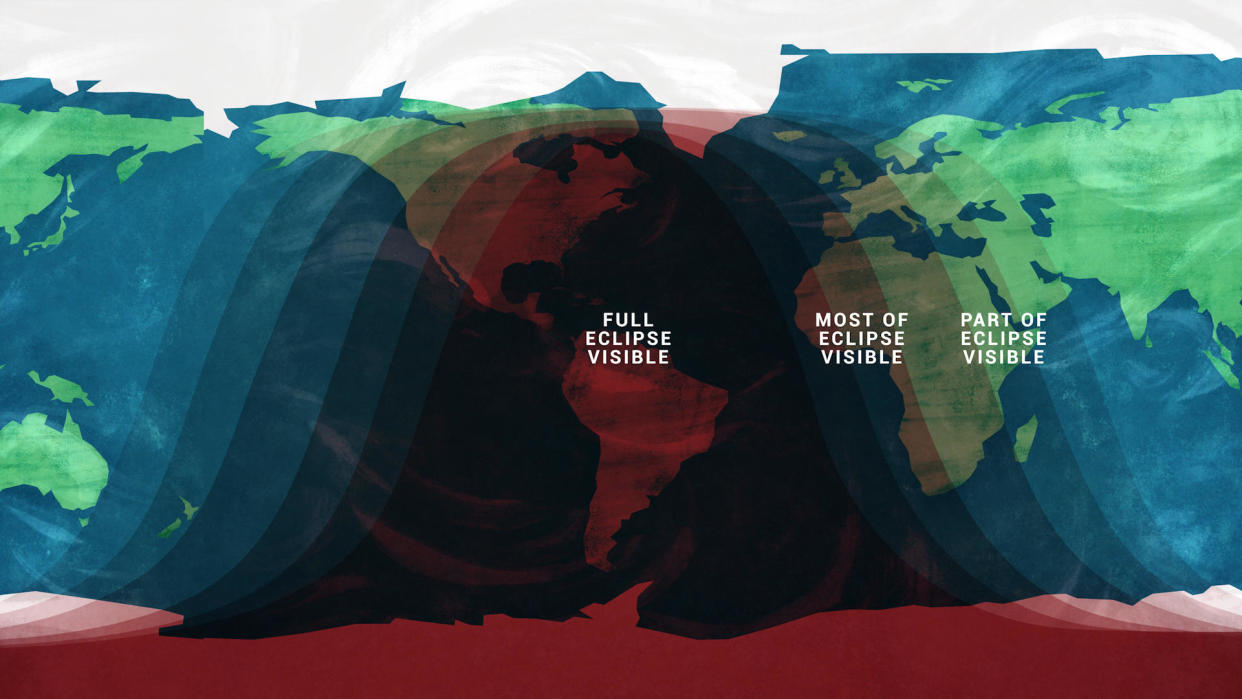A spectacular full moon will grace the night sky on Sunday night. It marks not only a supermoon, but also a blood moon — thanks to a lunar eclipse.
The last total lunar eclipse occurred a year ago, on May 26, 2021. If the weather is clear, millions of skywatchers in the Americas, Europe and Africa will be able to view the total lunar eclipse on the night of May 15-16.
What is a blood moon?
According to NASA, a blood moon occurs during a total lunar eclipse, when the Earth is positioned directly between the moon and the sun, hiding the moon from sunlight.
During totality, the moon will be a faint, reddish glow, as red wavelengths of sunlight filter through our planet's atmosphere onto the moon's surface. At different moments during the eclipse, it could also appear to take on shades of orange, yellow or brown.
"When this happens, the only light that reaches the moon's surface is from the edges of the Earth's atmosphere," the space agency explains. "The air molecules from Earth's atmosphere scatter out most of the blue light. The remaining light reflects onto the moon's surface with a red glow, making the moon appear red in the night sky."
This month's full moon is also a supermoon, meaning it appears slightly larger and brighter than usual because it is at its closest point to Earth in its orbit, known as the perigee.
It's also the flower moon, one of the names given to May's full moon due to the abundance of flowers associated with spring in the Northern Hemisphere. It has also been called the corn planting moon and the milk moon.
How to Watch
Unlike a solar eclipse, which requires special glasses in order to prevent eye damage, a lunar eclipse is safe to view with the naked eye — but binoculars or a telescope would also enhance the viewing experience.
The visible part of the eclipse will begin around 10:30 p.m. ET on May 15, NASA says, when the moon enters Earth's shadow. Totality, when the moon is fully covered by our planet's shadow, follows around midnight, lasting about an hour and a half.
It will end around 2 a.m. ET.
According to NASA, viewers in the Eastern U.S. will see the eclipse begin with the moon well above the horizon, while those in the central part of the country will see it start about an hour and a half after dark. On the West Coast, the moon will rise when totality is already underway, so the best views will be to the southeast.
So, East Coast viewers will be able to see the event high in the sky, but those on the West Coast should look for an unobstructed spot to watch from. According to timeanddate, this will be the longest prime-time total lunar eclipse on the West Coast this century.
But don't worry if you don't have an optimal view: NASA will be live streaming the event, showing off views from around the world and answering viewers' questions about the phenomenon.
Rare "super flower blood moon" lunar eclipse captured in stunning photos from around the world
Saturday Sessions: Bear’s Den performs "Blue Hours”
Saturday Sessions: Bear’s Den performs "Spiders”
Saturday Sessions: Bear’s Den performs "Frightened Whispers"
Source: Read Full Article



